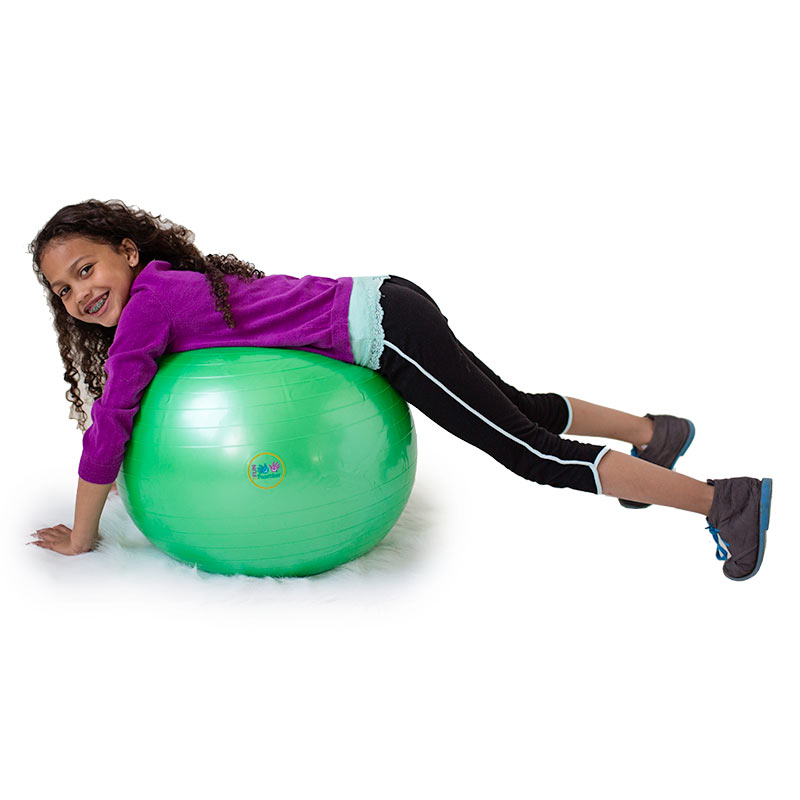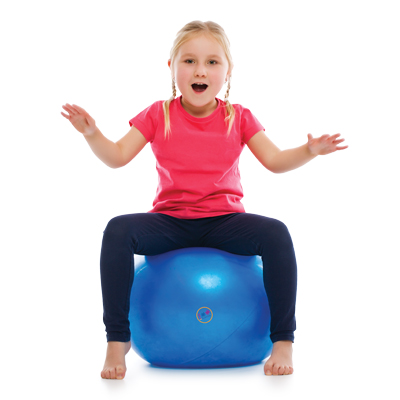What's highly versatile, made of soft elastic and filled with air? A therapy ball (also known as an exercise ball, Swiss Ball, balance ball, birth ball, body ball, ball, fitness ball, gym ball, gymnastic ball, physioball, Pilates ball, Pezzi ball, sports ball, stability ball, Swedish ball, or yoga ball, just to name a few). With full or partial inflation using a high volume hand or electric pump, a therapy ball can be used in a multitude of ways and has evolved over time.
Aquilino Cosani, an Italian plastics manufacturer, developed the first Swiss Ball in 1963 along with a process for molding large plastic balls. The ball was used by Mary Quinton, a British physiotherapist working in Switzerland, for treatment programs with newborns and infants. Later, Dr. Susanne Klein-Vogelbach, the director at the Physical Therapy School in Basel, Switzerland, integrated the use of ball exercise as physical therapy for neuro-developmental treatment. The concept was later brought to North America where use of therapy balls became prevalent in just about every physical therapy clinic.
Therapy balls provide multiple benefits:
Muscle Recruiting
A primary benefit of using an exercise ball is that the body responds to the instability of the ball, recruiting muscles of the core, legs and arms to respond to the instability. So, more muscles can be recruited than when exercising on a flat surface. For example, when you lie prone with your stomach on the ball and lift your legs, you are engaging the upper arms, legs and core at the same time.
Neuro Development
Therapy balls are a phenomenal tool that can support children with developmental delays. Use the ball to position the child in developmental positions (stomach, back, all fours, tall kneeling and even standing) with hands-on support from a trained therapist, encouraging the body and brain to work together.
Portability
A therapy ball is portable! Families can use the ball when travelling and therapists can take the ball to different clients. Keep a small hand pump handy to inflate or deflate the ball to the desired level.
Adjustable Surface
You can inflate fully or partially deflate the ball to create an entirely different sensory experience. A partially deflated ball can feel more like a beanbag chair or like you're riding an ocean wave. A fully inflated ball is more stable and provides a great place to sit, move and bounce. You can also get a tactile therapy ball with bumps to create a different sensory experience altogether.
Good Posture
Using your ball as a seat is a great idea. The key is to bend hips, knees and ankles to a 90 degree angle. This provides an active seat that engages muscles while bouncing, playing a game, watching TV, or working at a desk. To size your ball for sitting and core balance activities, try this secret: measure the length of your arm from your shoulder to your fingertips and select the corresponding ball diameter. If you plan to use it as a balance ball with young children, you can order any size you like.
Attention
Research suggests that sitting on a therapy ball, which engages the core muscles, can help to improve focus and concentration. Combined with the gentle movement of the ball, this alert position helps to engage the brain as well as the body.
For example, a study cited in the American Journal of Occupational Therapy (2003) reported that sitting on a therapy ball improved behavior and legible handwriting in students with ADHD. A study in the the American Journal of Occupational Therapy (2011) cited the effect of stability balls on attention and hyperactivity levels in 76 children. It also evaluated the effect on in-seat and on-task behavior for eight children who were above the 92nd percentile for hyperactivity and attention difficulties. All of the children showed improved attention and decreased hyperactivity levels with the implementation of stability balls. The greatest effect occurred for the eight children that had significant difficulties prior to the intervention implementation.
Ageless
Anyone can use a therapy ball from birth to senior (with supervision). From neurodevelopment to core workouts to yoga to restoration therapy, a ball creates the perfect surface for exercise throughout the years.
Durability
Therapy balls will last for years if maintained properly and kept in a room with consistent temperature. A few quick pumps of air will return the ball to your desired level of inflation.
Check out our collection of therapy balls.
Large or small? Smooth or bumpy? Round or peanut-shaped? With so many choices, you don't have to go it alone! Reach out to our experienced team and we'll help you make the best selection for your family, classroom or clinic. Just email wecare@funandfunction.com any time you want to have a ball!






























Comments